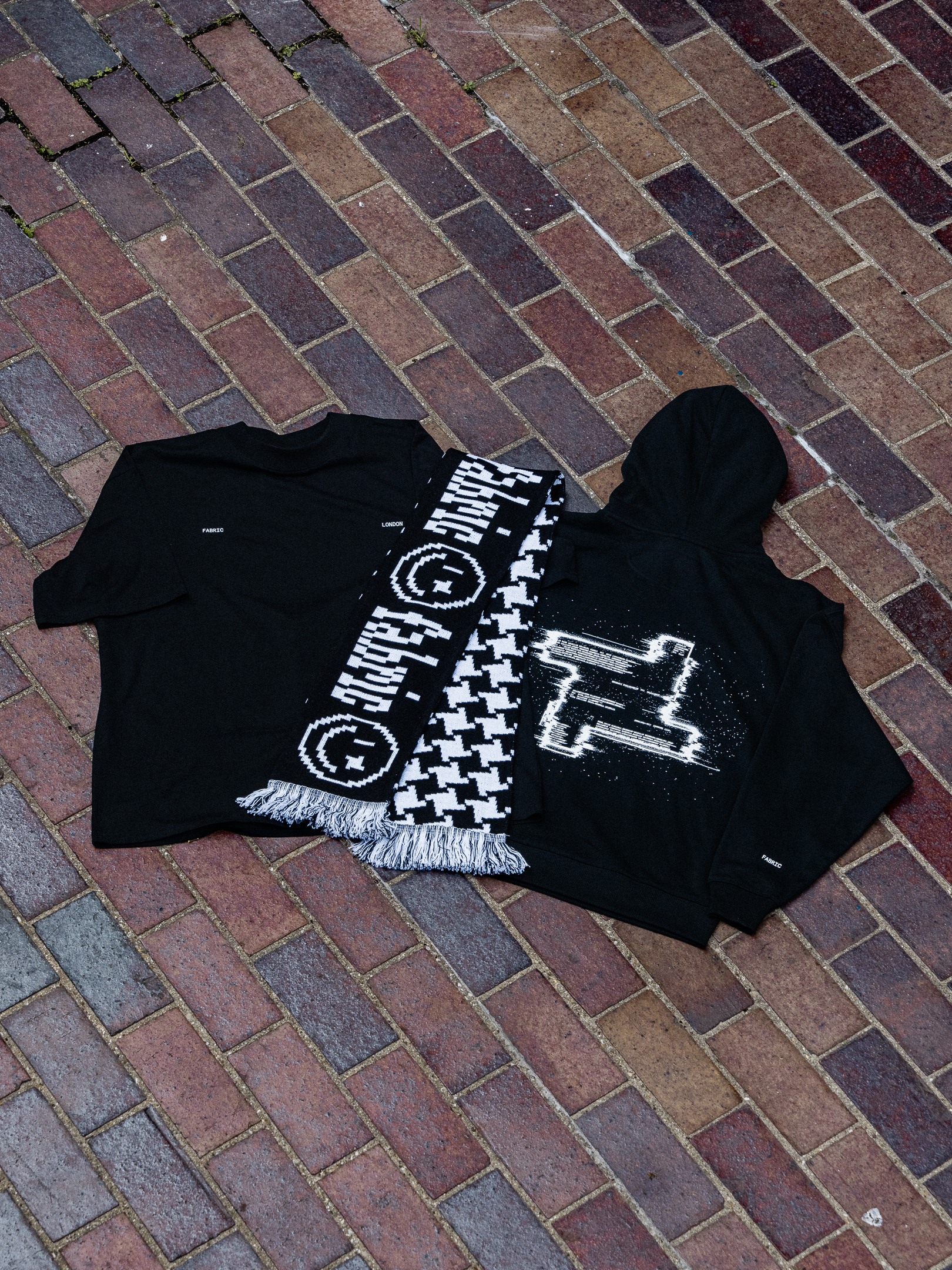News
In Conversation With Distance & Tunnidge
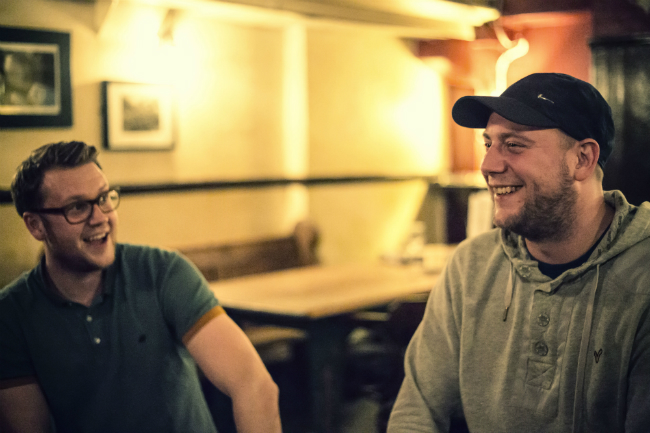 With such a progressive and fast evolving dance music scene, it’s easy to forget the pioneering artists and those particular movements that have helped shape the current state of play. We’re talking more about artists that have over the years contributed not only to music, but also to a feeling and a flavour, creating new pockets of sound and building micro worlds of new musical fusions at a grass roots level. Honestly, it’s those types of inspirational people that we strive to provide a platform for, week in week out.
Having done so much for the dubstep scene in its early days, there’s no question that Greg Sanders and Tim Langridge (aka Distance and Tunnidge respectively) fit that hardworking, bleeding edge bill perfectly. They’ve both clearly maintained a firm standpoint in terms of their music - steadfastly using the spacious 140bpm template as a base to explore the other regions of the form.
Distance was a paramount figure in the development of dubstep alongside esteemed artists like Skream, Pinch and Cyrus, but it was his empirical and experimental take on the sound released on his own Chestplate imprint that saw him championed on the seminal Dubstep Warz show on Mary Anne Hobbs’ then BBC Radio One show. Subsequently forging his status as a critical figure within the movement, it was his pioneering use of the heavy metal and industrial elements so apparent in his earlier output that twisted the dubstep sound into a harder new contortion. Tunnidge also possesses that same type of seemingly peerless ability; able to create and control a slew of heavyweight dancefloor smashers as well as illustrating the portraits for the artwork on the Deep Medi label’s 12” releases.
With a long friendship between them, there’s a unique and distinctive kind of dynamism between their two characters and with both parties joining us for the Chestplate takeover of Room Three on Friday 29th November, we caught up with the duo on a tired afternoon in Farringdon to talk about the label, their early music tastes and promoters putting the number of facebook likes on club flyers.
I think we should start off by going back in time to when you guys first met. Tim, you were the first artist to release on Chestplate back in 2010, other than Greg. How did all of that come about?
Distance: I first met Tim when I was playing in Bristol with Pinch and Mala. Mala happened to be working with Tim at the time so was there with him.
Tunnidge: Yeah, I came down to Bristol with Mala. I remember he told me he was planning to play one of my tunes out for the first time so asked if I wanted to come with him. So I met Greg at this gig and I think we were talking about the possibility of me doing the artwork for Chestplate as Greg was looking for someone to do design the logo for the label.
D: Yeah that’s it, I was starting the label when I met Tim and at the time, I didn’t have any artwork so asked Tim to design the label and that was it really. From that point onwards, we kept in touch and Tim would send me tunes now and again.
T: So I was doing the artwork for Medi and Chestplate but I was also just sending Greg tunes and he was helping out with all my production tips and mixdowns. At one point we both went down to The End and Greg played one of my tunes out and I remember thinking ‘this is really shit’ and Greg had to kind of show me what I needed to do to make it sound better on the system.
With such a progressive and fast evolving dance music scene, it’s easy to forget the pioneering artists and those particular movements that have helped shape the current state of play. We’re talking more about artists that have over the years contributed not only to music, but also to a feeling and a flavour, creating new pockets of sound and building micro worlds of new musical fusions at a grass roots level. Honestly, it’s those types of inspirational people that we strive to provide a platform for, week in week out.
Having done so much for the dubstep scene in its early days, there’s no question that Greg Sanders and Tim Langridge (aka Distance and Tunnidge respectively) fit that hardworking, bleeding edge bill perfectly. They’ve both clearly maintained a firm standpoint in terms of their music - steadfastly using the spacious 140bpm template as a base to explore the other regions of the form.
Distance was a paramount figure in the development of dubstep alongside esteemed artists like Skream, Pinch and Cyrus, but it was his empirical and experimental take on the sound released on his own Chestplate imprint that saw him championed on the seminal Dubstep Warz show on Mary Anne Hobbs’ then BBC Radio One show. Subsequently forging his status as a critical figure within the movement, it was his pioneering use of the heavy metal and industrial elements so apparent in his earlier output that twisted the dubstep sound into a harder new contortion. Tunnidge also possesses that same type of seemingly peerless ability; able to create and control a slew of heavyweight dancefloor smashers as well as illustrating the portraits for the artwork on the Deep Medi label’s 12” releases.
With a long friendship between them, there’s a unique and distinctive kind of dynamism between their two characters and with both parties joining us for the Chestplate takeover of Room Three on Friday 29th November, we caught up with the duo on a tired afternoon in Farringdon to talk about the label, their early music tastes and promoters putting the number of facebook likes on club flyers.
I think we should start off by going back in time to when you guys first met. Tim, you were the first artist to release on Chestplate back in 2010, other than Greg. How did all of that come about?
Distance: I first met Tim when I was playing in Bristol with Pinch and Mala. Mala happened to be working with Tim at the time so was there with him.
Tunnidge: Yeah, I came down to Bristol with Mala. I remember he told me he was planning to play one of my tunes out for the first time so asked if I wanted to come with him. So I met Greg at this gig and I think we were talking about the possibility of me doing the artwork for Chestplate as Greg was looking for someone to do design the logo for the label.
D: Yeah that’s it, I was starting the label when I met Tim and at the time, I didn’t have any artwork so asked Tim to design the label and that was it really. From that point onwards, we kept in touch and Tim would send me tunes now and again.
T: So I was doing the artwork for Medi and Chestplate but I was also just sending Greg tunes and he was helping out with all my production tips and mixdowns. At one point we both went down to The End and Greg played one of my tunes out and I remember thinking ‘this is really shit’ and Greg had to kind of show me what I needed to do to make it sound better on the system.
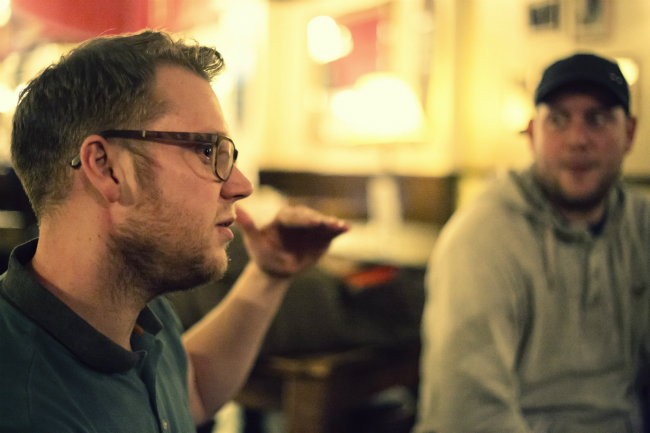 You both have quite varied music backgrounds. Greg, you were clearly influenced by heavy metal and Tim, you were influenced more by d&b and dance music.
T: I’ve always liked d&b. Since I was a kid I really liked the big heavy bass riffs of the 2000s drum & bass scene - all the Dillinja stuff - so I started experimenting with it over the half step and 2-step sound.
D: Yeah, whereas I was into my metal more people like Sepultura, Pantera and even Metaliica when I was a lot younger
T: Saying that, I would listen to that music as well. I guess really I was into all kinds of music
D: Yeah same, I would listen to d&b like Prodigy and Apex Twin. But that [heavy metal] was the energy I always wanted in my music, not necessarily fast like d&b but slow, heavy and powerful.
It seems that a lot of producers, especially those in the dubstep and d&b spectrum are influenced by metal.
D: Yeah, I remember being at school and there was such a divide. If you were a metal head like I was, you used to slate those who would listen to jungle; you’d be like - this is buttons! You had your metal heads and then you had your junglists and at some point I eventually found myself between the two.
Do you think that’s the same now?
D: No, I think it’s completely different now. Music has changed and people like what they like and it doesn’t matter. You don’t have so much conflict between heads anymore.
T: I think it’s more recent thing to be honest, I think the lines are becoming blurred a bit you know, no one really gives as much of a shit anymore.
D: I think it makes it easier for producers to make what they want and be successful in other genres .
T: I think dubstep has always been like that, you know, it was experimentalist music really wasn’t it? Suddenly everyone realised it was cool to do experimental stuff rather than sticking to these rigid lines.
You both have quite varied music backgrounds. Greg, you were clearly influenced by heavy metal and Tim, you were influenced more by d&b and dance music.
T: I’ve always liked d&b. Since I was a kid I really liked the big heavy bass riffs of the 2000s drum & bass scene - all the Dillinja stuff - so I started experimenting with it over the half step and 2-step sound.
D: Yeah, whereas I was into my metal more people like Sepultura, Pantera and even Metaliica when I was a lot younger
T: Saying that, I would listen to that music as well. I guess really I was into all kinds of music
D: Yeah same, I would listen to d&b like Prodigy and Apex Twin. But that [heavy metal] was the energy I always wanted in my music, not necessarily fast like d&b but slow, heavy and powerful.
It seems that a lot of producers, especially those in the dubstep and d&b spectrum are influenced by metal.
D: Yeah, I remember being at school and there was such a divide. If you were a metal head like I was, you used to slate those who would listen to jungle; you’d be like - this is buttons! You had your metal heads and then you had your junglists and at some point I eventually found myself between the two.
Do you think that’s the same now?
D: No, I think it’s completely different now. Music has changed and people like what they like and it doesn’t matter. You don’t have so much conflict between heads anymore.
T: I think it’s more recent thing to be honest, I think the lines are becoming blurred a bit you know, no one really gives as much of a shit anymore.
D: I think it makes it easier for producers to make what they want and be successful in other genres .
T: I think dubstep has always been like that, you know, it was experimentalist music really wasn’t it? Suddenly everyone realised it was cool to do experimental stuff rather than sticking to these rigid lines.
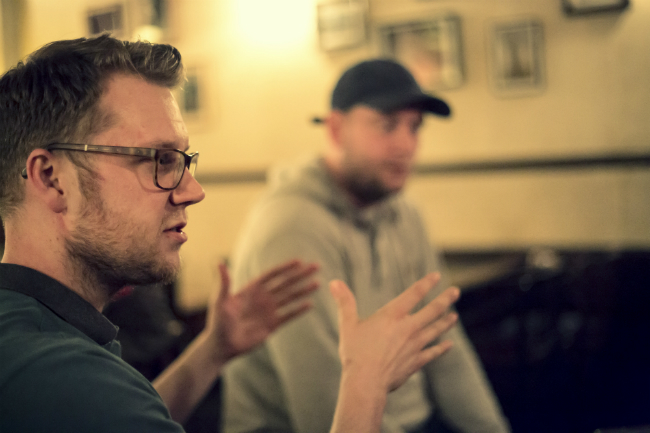 Do you feel dubstep was at the forefront of that movement then?
T: Yeah, back in the day, but I think that concept of being experimental has carried on through dance music.
D: I’ve definitely spoken to d&b artists and they say that dubstep really gave them a kick up the arse because they realised that they needed to move forward and develop their sound, which is pretty interesting.
How do you feel about this heavy influx of house and techno music? Obviously, it’s always been here but there’s no doubt that recently it’s been at the forefront of dance music, compared to say, two three years ago where dubstep was definitely more prominent, especially in places like Bristol where I was based.
T: I think slowly house and techno has become the flavour, you know dubstep was before, but now house & techno are, and that’s just the way it goes. I think d&b has been a bit quiet in the last few years but you can see it coming through again. Music moves in circles, none of it will go anywhere, it’s the way that genres evolve and rotate.
Can that be frustrating if you are pursuing one musical direction in that sense?
T: Music is music you know, I think people get caught up with themselves and that their career is about staying on trend rather than the health of the scene.
D: I think what it does though, is it shows the difference between people who are purely just following trends and those who are just sticking to their roots. First you’re making house and now our making dubstep? There are people who are blatantly just choose to have that as their career and stay following the trends.
I guess it’s hard to keep that balance to remain on trend and stay true to what you first started pursuing…
T: It’s a bit of a paradox really. You want to maintain what you’re doing and stick to it and enjoy but you’ve got to be relevant musically.
I think it’s frustrating when people disregard one genre just because it’s not “trendy”. You want to show them some incredible d&b tunes but they’re like ‘d&b? no way!’ before they’ve even given it a chance...
D: Those are the kind of people that when you know d&b will suddenly become trendy, they’ll be like ‘have you listened to this?’ and you’re going ‘I’ve been telling you about this for ages…’ But that’s popular culture for you.
T: You’re always going to have those people that migrate to trends because all music is to them, is their fashion accessory. It adorns part of their look and persona and you get other people where it’s their life and they love it no matter what.
D: It was the problem with dubstep over the past two or three years. You know it became popular and everyone migrated to it and now it’s not popular and suddenly your Annie Mac’s and your Zane Lowe’s don’t care anymore.
How did you feel when dubstep suddenly became commercial?
D: Well we all benefited from that, we all got more bookings but there were shows where the promoter just wanted a dubstep act. They didn’t care who it was they just wanted that sound as part of the bill.
T: I think nowadays, there’s a lot of number counting online, where people worry about how many plays and likes on their soundcloud. Back in the day you used to get producers who were booked on the basis of where you were, what label you released, what show you were playing – that stuff was your pedigree. Nowadays, people look at twitter and facebook followers and I think promoters - because there is cash element involved - think that is a direct correspondence with how many people they are going to get through the doors, rather than putting on a night that bring artists together that work musically.
D: I think there are a lot of people who should be out there getting heard but they never have because you only have 500 followers on facebook.
T: The other day dBridge tweeted saying he had just seen a flyer that includes the facebook likes of people that are playing.
D: I’ve seen it on flyers in America, it’s ridiculous
Do you feel dubstep was at the forefront of that movement then?
T: Yeah, back in the day, but I think that concept of being experimental has carried on through dance music.
D: I’ve definitely spoken to d&b artists and they say that dubstep really gave them a kick up the arse because they realised that they needed to move forward and develop their sound, which is pretty interesting.
How do you feel about this heavy influx of house and techno music? Obviously, it’s always been here but there’s no doubt that recently it’s been at the forefront of dance music, compared to say, two three years ago where dubstep was definitely more prominent, especially in places like Bristol where I was based.
T: I think slowly house and techno has become the flavour, you know dubstep was before, but now house & techno are, and that’s just the way it goes. I think d&b has been a bit quiet in the last few years but you can see it coming through again. Music moves in circles, none of it will go anywhere, it’s the way that genres evolve and rotate.
Can that be frustrating if you are pursuing one musical direction in that sense?
T: Music is music you know, I think people get caught up with themselves and that their career is about staying on trend rather than the health of the scene.
D: I think what it does though, is it shows the difference between people who are purely just following trends and those who are just sticking to their roots. First you’re making house and now our making dubstep? There are people who are blatantly just choose to have that as their career and stay following the trends.
I guess it’s hard to keep that balance to remain on trend and stay true to what you first started pursuing…
T: It’s a bit of a paradox really. You want to maintain what you’re doing and stick to it and enjoy but you’ve got to be relevant musically.
I think it’s frustrating when people disregard one genre just because it’s not “trendy”. You want to show them some incredible d&b tunes but they’re like ‘d&b? no way!’ before they’ve even given it a chance...
D: Those are the kind of people that when you know d&b will suddenly become trendy, they’ll be like ‘have you listened to this?’ and you’re going ‘I’ve been telling you about this for ages…’ But that’s popular culture for you.
T: You’re always going to have those people that migrate to trends because all music is to them, is their fashion accessory. It adorns part of their look and persona and you get other people where it’s their life and they love it no matter what.
D: It was the problem with dubstep over the past two or three years. You know it became popular and everyone migrated to it and now it’s not popular and suddenly your Annie Mac’s and your Zane Lowe’s don’t care anymore.
How did you feel when dubstep suddenly became commercial?
D: Well we all benefited from that, we all got more bookings but there were shows where the promoter just wanted a dubstep act. They didn’t care who it was they just wanted that sound as part of the bill.
T: I think nowadays, there’s a lot of number counting online, where people worry about how many plays and likes on their soundcloud. Back in the day you used to get producers who were booked on the basis of where you were, what label you released, what show you were playing – that stuff was your pedigree. Nowadays, people look at twitter and facebook followers and I think promoters - because there is cash element involved - think that is a direct correspondence with how many people they are going to get through the doors, rather than putting on a night that bring artists together that work musically.
D: I think there are a lot of people who should be out there getting heard but they never have because you only have 500 followers on facebook.
T: The other day dBridge tweeted saying he had just seen a flyer that includes the facebook likes of people that are playing.
D: I’ve seen it on flyers in America, it’s ridiculous
 I’m guessing that’s pretty frustrating for you as artists who have made it to the point you’re at now, purely on the basis of your music and the label and nights your associated with?
T: If that’s what people think that’s what they need to do, then you have to just respect it. I think the best advice you can give anyone is to do what you want to do and don’t worry about anyone else
You’ve worked together a lot over the years through releases, remixes and playing out. Have there been any memorable moments?
T: Ah, we always have a laugh don’t we…? The Chestplate stage last year at Outlook was really good.
D: The US Chestlplate tour was pretty special. It’s always quite surprising really, there’s always a lot of support over there.
Where did you guys play?
D: We did Detroit, Denver, LA, Portland and San Francisco
Do you think the crowds are the same over there?
D: This is the difference right: let’s say you’re playing at Room Three at fabric, you always get people coming up to you and they’ll talk and bitch about other sounds but in America, they’ll mention artists who are nothing like us and they’ll say ‘last week we saw xxxxxx, he absolutely killed it’, it’s weird but they really do see it all as one.
T: I think America picking up on dance music is a really good thing. You know d&b really took off everywhere but it didn’t really reach America, they were always into their rock or hip hop and that was it. You’ve only got to listen to the pop music over there to see how much they are being influenced by dance music.
You’re playing at FABRICLIVE under the Chestplate banner at the end of the month. How do you think the club has influenced you as an artist?
D: fabric was the first London club I ever went to as everything else I went to was for live bands. fabric was the first time I experienced clubbing and club music in its prime.
T: I see it as an accolade, its big and well known but the roster of artists that they have through and maintain a specific level of music and represent a wide range of stuff. I think fabric educates people and I think they give people who are running label takeovers the chance to reach a wider range of people.
I’m guessing that’s pretty frustrating for you as artists who have made it to the point you’re at now, purely on the basis of your music and the label and nights your associated with?
T: If that’s what people think that’s what they need to do, then you have to just respect it. I think the best advice you can give anyone is to do what you want to do and don’t worry about anyone else
You’ve worked together a lot over the years through releases, remixes and playing out. Have there been any memorable moments?
T: Ah, we always have a laugh don’t we…? The Chestplate stage last year at Outlook was really good.
D: The US Chestlplate tour was pretty special. It’s always quite surprising really, there’s always a lot of support over there.
Where did you guys play?
D: We did Detroit, Denver, LA, Portland and San Francisco
Do you think the crowds are the same over there?
D: This is the difference right: let’s say you’re playing at Room Three at fabric, you always get people coming up to you and they’ll talk and bitch about other sounds but in America, they’ll mention artists who are nothing like us and they’ll say ‘last week we saw xxxxxx, he absolutely killed it’, it’s weird but they really do see it all as one.
T: I think America picking up on dance music is a really good thing. You know d&b really took off everywhere but it didn’t really reach America, they were always into their rock or hip hop and that was it. You’ve only got to listen to the pop music over there to see how much they are being influenced by dance music.
You’re playing at FABRICLIVE under the Chestplate banner at the end of the month. How do you think the club has influenced you as an artist?
D: fabric was the first London club I ever went to as everything else I went to was for live bands. fabric was the first time I experienced clubbing and club music in its prime.
T: I see it as an accolade, its big and well known but the roster of artists that they have through and maintain a specific level of music and represent a wide range of stuff. I think fabric educates people and I think they give people who are running label takeovers the chance to reach a wider range of people.
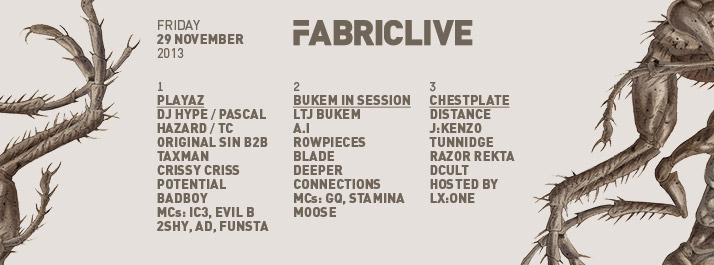 Photos: Sarah Ginn
Photos: Sarah GinnTags
No items found.


.jpg)

